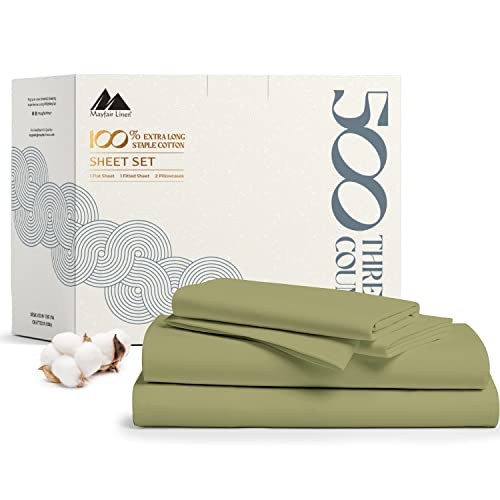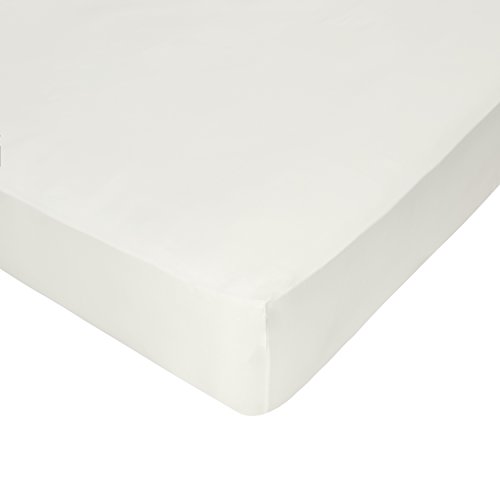There’s nothing worse than laying to sleep and breaking out into a sweat because of a hot night’s sleep. However, many people (especially those who suffer from insomnia) find it almost impossible to fall asleep with the heat cranked up in their own bedrooms. In fact, many insomniacs literally can’t sleep… no matter how much or how little they are exposed to the elements.

The key thing is knowing what your bedding is made of? Silk, linen and cotton both have their pros and cons, but which one keeps you cooler at night?
It is essential to wear appropriate clothing to match the weather. Knowing the right clothing to select to prevent overheating in the sweltering summer heat is very important.
Silk and linen definitely keep you cooler than cotton. Silk and linen dissipates heat a lot better than cotton does due to two major factors which are breathability and the ability to wick moisture quickly.
It doesn’t matter if you are trying to select a summer wardrobe or buy some serious bedding the most common selections for summer clothing are cotton and linen. Though they are both natural fabrics, there are several factors you have to analyze before selecting a fabric to wear also during the summer one of the most critical factors is how well the fabric can keep you cool.
If you are after the right bedding options for your bedroom, below are 3 that I have tried and have worked amazingly well.






Last update on 2024-04-26 / Images from Amazon Product Advertising API
Linen is made from the lengthy fibers. These allow air to easily move through linen clothing making you sweat a lot less and subsequently keeping you cool.
How cool you’ll feel might be an important consideration when it comes to selecting summer clothing but it is not the only factor to be considered while choosing the best fit.
You have to properly understand the varying characteristics of linen and cotton and what they offer to your body in terms of keeping you cool before you can go ahead to make the most suitable alternative.
We will look at this in more detail to help us understand the major advantages and disadvantages of each fabric choice.
Heat Conductivity
Linen fabric is a very good heat-conductive fabric. Heat-conductivity is the ability of a fabric to allow body heat to escape into the surrounding environment. The higher the heat conductivity of the fabric the more of a cooling effect it has for the wearer. The weave of linen is also more resistant to absorbing heat than cotton.
Due to linen’s extraordinary heat conductivity, it acts as a wonderful self-cooling mechanism. There are claims that the thermal conductivity of linen is as much as five times better than that of wool and eighteen times better than that of silk.
Breathability
It was stated previously in this article that one of the two properties like give linen an advantage over cotton as a choice for summer wear is its breathable nature. The fibers of linen are hollow, large, and wide.
These features make linen more breathable than cotton, the fibers in linen are also usually woven and clothes in this style are usually flowing and relaxed.
This means linen does not adhere to your skin and stays away from your body and consequently air can move through the fabric and provide coolness and relief even on a hot summer day.
Absorbency
Another important characteristic of learning is its highly absorbent nature. It absorbs up to 20% of its weight in moisture before you can start to feel any wetness from it.
Even though cotton has a slightly better absorbency to weight ratio at 25% linen still performs better overall due to its ability to Wick away moisture. By the time linen clothes have absorbed enough water to feel wet or damp a lot of the moisture has already begun to evaporate already.
Due to linen’s unique wicking ability, it dries at a much faster rate than cotton. Due to this linen is an excellent choice for people who sweat a lot, especially if you sleep in a hot place and experience night sweats you’ll really appreciate linen sheets that are not only breathable but also absorbent.
Differences between cotton and linen
Aside from the characteristics listed above, there are other notable dissimilarities between linen and cotton. Understanding these differences is essential as they give insight into the when, where how, and why you should utilise each of these fabrics for different purposes.
It is important for us to first understand both these materials before we start on their differences.
Cotton is a soft fibre that is produced from cotton plants while linen is a long-lasting fabric that is a product from flax plants. Linen has a crisp and coarse feel in comparison to cotton though it softens with the passage of time after repeated wear and washing. However cotton in comparison with linen is smooth right from the start.
Silk, cotton and linen fabrics are both hypoallergenic fabrics. Hypoallergenic fabrics are simply fabrics that are unlikely to trigger any allergies as opposed to other materials. Though both cotton and linen are hypoallergenic, if you have any hypersensitivities linen is most likely the safer bet since its smaller thread count and loose weave means it traps less dust.
Silk, linen and cotton are both very suited to cold water washing but cotton is capable of enduring hot water without any damage to its durability meanwhile using hot water to wash linen damages its fibers.
Linen and cotton can both be dried at low settings with either an air dryer or a tumble dryer.
Finally, the durability of linen is noteworthy and it has earned a reputation as the world’s most resilient natural fabric. When linen is matched against cotton in this regard it is estimated to be about thirty percent stronger.
It also has more weight than cotton. If maintained properly and handled with care clothing and bedding made from linen fabric can last for decades. The durability and lifespan of clothing made from cotton fabric however varies widely depending on its variety or weave.
Disadvantages of Linen
Linen, just like any other thing is not flawless it also has several drawbacks despite its considerable advantages. Though the disadvantages of linen are not numerous, it is left to the user to decide if they make linen their fabric of choice based on the use for which it is intended after considering the information available to them.
Linen fabric is comparatively stiff and this can make it uncomfortable. This discomfort also becomes more pronounced depending on the quality of linen you buy. The texture of linen can feel harsh or coarse on the first wear before it is washed a couple of times. However, with time, the linen becomes more comfortable and softens after being worn and washed a few times.
Linen also creases and rumples very quickly and is not easy to clean due to the very same reasons. It can also look unappealing if washed with water that has high mineral content also known as hard water. It is recommended that you do not fold linen due to the creasing it might cause when you bring it from the closet to wear, it is instead recommended that you hang your clothing made from linen. Linen is also very good at dissipating heat which can also have a negative effect when you’re trying to get warm. The breathability that makes it function so well as a good fabric for summer means it is a poor insulator. This may be all well and good on a hot summer day but when you step into an air-conditioned environment or on a cold winter day you may need better insulation from the cold
Last but not least is the cost of linen fabric. Linen fabric can be a pricey option and this is because of the difficulty of weaving it. Due to its inelastic nature, it can break easily while in production. The increased production price in turn directly results in its higher purchase price.
Final Thoughts
When it comes to cooling down on a hot summer day you can be sure that linen is the perfect fit for such an occasion. Linen is best suited to be worn in relaxed environments, at beaches, outdoor parties, or other casual events.
The information we’ve already seen points to the fact that clothing made from linen ages exceptionally well and also lasts really long due to its famed durability. This makes it worth the high price that it is purchased for.
Cotton alternatively possesses its own benefits which make it a favored choice for summer wear for good reason.
The major considerations when making a choice between cotton and linen clothing is where you’re wearing it to and the weather. Apart from the previously mentioned reasons, the fabric you select will boil down to personal preference. You can find clothes of high quality whether you favor cotton fabric or linen fabric.
